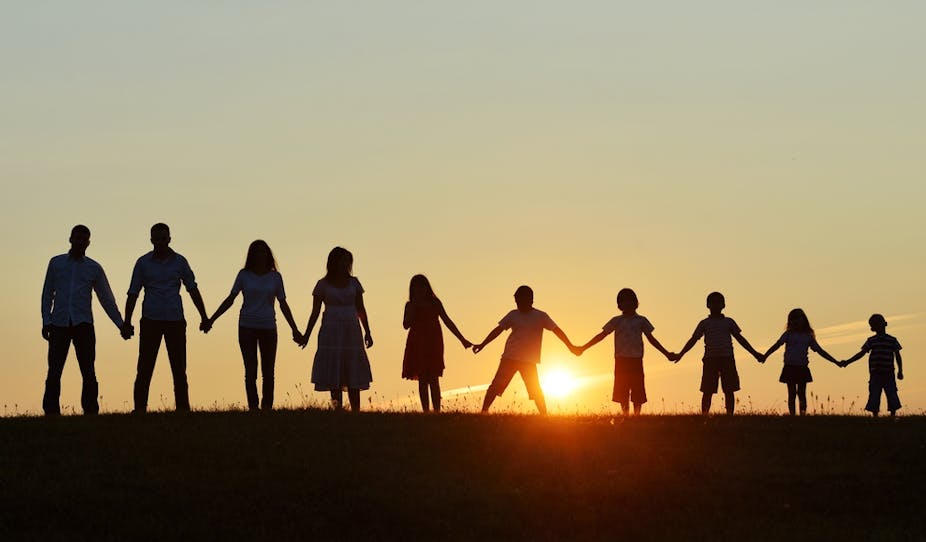Nostalgia is a powerful force in how we think about family. There is a persistent myth that family structures were better in the past; that the “golden age” of marriage is over, and the family is in decline. Historical and sociological research tells a different story.
There were dramatic changes to ideals and practices of family life across the 20th century. The five decades between the end of the first world war and the 1970s saw the triumph of ideals about mutuality in love and romance. Ordinary people could afford to marry for love, rather than on the basis of economic strategy. In the 1950s, more people married than ever before and married young.
As many historians have observed, this all changed in the 1970s. The sexual revolution introduced new ideals about love, sex and relationships. Sex could be separated from love and marriage. No longer bound to life-long monogamy, sex could be viewed as “a rewarding form of play”.
This loosening of the bounds of sex and marriage was enabled by significant social, medical and political changes: the contraceptive pill, safer access to abortion, no-fault divorce. The new attitudes to women, reproduction and marriage that underpinned and emerged the sexual revolution also altered understandings of the family.
Did the sexual revolution destroy the family?
The significance of marriage certainly changed. Marriage no longer regulates social life as was once the ideal. It is no longer the reason most people leave home and establish their own household, start a career, and embark on adulthood. Now, it’s something people contemplate after having achieved those goals.
Marriage is no longer the structure in which people expect to make their sexual debut. It is not necessarily the structure in which people have and raise children. Nor is it the structure in which many people expect to live out their final years.
However, marriage is far from being “over”. Demographic research reveals that the profile of family life in Australia has been remarkably stable for the last 20 years.
People are marrying later, but marriages lasting slightly longer. Almost all couples live together before marrying (almost 80%). And marriages are becoming more equal.
US historian Stephanie Coontz recently reissued her study of the American family, The Way We Never Were. Coontz suggests the ongoing claims of social conservatives that the family is in crisis are not well-founded.
While divorce rates are high, they are actually falling. And divorce isn’t necessarily bad for families. Coontz found that after the introduction of no-fault divorce, suicide rates of wives plummeted, and so did rates of domestic violence.
Despite more women engaging in paid work, parents have actually increased the amount of time spent on child care. Women’s hours of child care have increased slightly, and men’s have tripled. While women still do more domestic work, the combined hours of paid and domestic work for men and women are similar. Men tend to increase their hours of paid work after having children.
This increase in equality in the home appears to be good for couples. Coontz found:
… heterosexual couples who share housework and childcare equally now report the highest levels of marital and sexual satisfaction – and the most frequent sex.
Anecdotal evidence suggests that marriage is actually increasing in popularity. Rather than life-long heterosexual monogamy being the only family ideal, new family values have emerged. Most Australians now recognise and value rainbow, blended and diverse family structures.
So rather than the sexual revolution having undermined the family, it appears that the family is thriving. Our family values have changed, though. For most Australians, marriage is no longer a ritual that initiates a family, but something contemplated when the family has become established.
Have our politicians kept up with changes to the family?
Families are always spoken about in politics as homogeneous, unchanging and timeless.
The last 50 years have seen the development of a range of “ideal” families. The vast majority of Australians now support marriage equality for LGBT people, recognising the dignity of value of existing LGBT families.
It’s time for our political leaders to catch up.
See our megagraphic on the changing shape of Australian families here.

